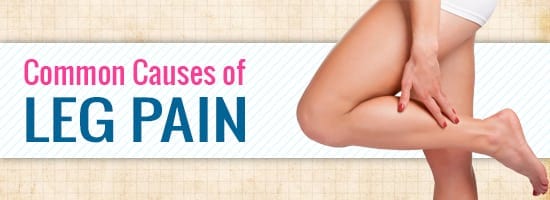
Leg pain can take on many different forms, and patients often assume that the pain they are experiencing is related to a problem located right in the leg. However, there are a lot of back problems that can actually contribute to leg pain. That’s why complaints of leg pain will usually involve an examination of the lower back, such as imaging tests like x-rays.
Some of the different conditions that can result in back pain include:
- Sciatica – The sciatic nerve starts in the back and travels down the leg. If the nerve is irritated, the pain can travel just as far.
- Facet joints – Worn down facet joints can contribute to pain in the leg, as well as the hip and lower back.
- Sacroiliac (SI) joint pain – This joint is located at the base of the spine. When inflamed, it can result in leg pain.
Spondylolisthesis, diabetic neuropathy, and osteoarthritis are also back problems that can contribute to leg pain.
Symptoms
There is no one type of leg pain associated with back issues. The pain that you experience can be burning, throbbing, dull, or aching. It can be a shooting pain that sends a jolt from your lower back down your leg and into your toes. The pain can also radiate from the back and buttocks into your leg. The pain can come and go or be continuous. It can hurt in certain positions only and come on gradually or all of a sudden. The pain can also be only a minor annoyance or be so unbearable that it is not possible to walk.
Often, leg pain is associated with weakness and numbness, as well as numbness in your feet. The weakness can make it difficult to move your leg and foot, which can make certain activities, like climbing stairs, challenging.
Treatments
The exact treatment that is best depends on what is causing your leg pain. Some options include spinal cord stimulation and blocks, such as nerve root blocks, facet joint blocks, and lumbar sympathetic blocks, which work by preventing pain signals from traveling to the brain. A sacroiliac (SI) joint injection delivers cortisone to the affected area to reduce inflammation.
Physical therapy, rest, and over-the-counter medications can also help to reduce leg pain, as well as elevating your leg whenever possible. In some cases, surgery is required to fix the problem.

